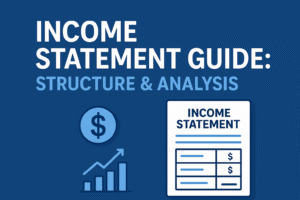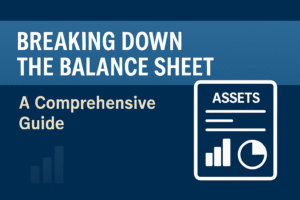Corporate finance is the backbone of every successful business, determining how companies raise capital, allocate resources, manage risks, and drive growth. From evaluating investments to ensuring liquidity, corporate finance decisions directly influence shareholder value and long-term sustainability. Whether you are a student, finance professional, or business owner, understanding corporate finance provides clarity on how organizations thrive financially.
What Is Corporate Finance?
Corporate finance refers to the area of finance that deals with how companies fund their operations, manage capital, and make investment decisions to maximize shareholder value. It involves the planning, raising, investing, and monitoring of financial resources to ensure efficient business growth.
Key aspects include:
- Capital investments: Deciding where to put money for long-term returns.
- Capital financing: Determining the best mix of debt and equity to fund operations.
- Liquidity management: Ensuring a company has enough cash to cover short-term needs.
In essence, corporate finance answers two fundamental questions:
- How should a company invest its funds?
- How should it finance these investments?
Understanding Corporate Finance
At its core, corporate finance is about balancing risk and profitability while maintaining financial stability. It is guided by three main principles:
- Investment Principle – Companies must carefully evaluate projects and allocate resources where returns exceed the cost of capital.
- Financing Principle – Choosing the right mix of debt, equity, and retained earnings to fund business activities.
- Dividend Principle – Determining whether profits should be reinvested into the business or distributed to shareholders.
These principles help managers make strategic decisions that align with long-term organizational goals.
Corporate Finance Activities
Corporate finance activities extend across strategic, operational, and tactical levels of business. The primary functions include:
- Financial planning and analysis (FP&A) – Preparing budgets, forecasts, and long-term financial models.
- Capital budgeting – Identifying profitable investment opportunities.
- Raising capital – Securing funds through equity, debt, or hybrid instruments.
- Risk management – Mitigating financial risks such as interest rate fluctuations, credit defaults, and foreign exchange risks.
- Mergers and acquisitions (M&A) – Assessing opportunities to expand or restructure business.
These activities ensure that resources are allocated efficiently to support growth and sustainability.
Capital Investments
Capital investments are long-term expenditures a company undertakes to build or expand its operations. These typically include purchasing machinery, developing infrastructure, launching new products, or acquiring other businesses.
The decision-making process for capital investments often uses methods like:
- Net Present Value (NPV)
- Internal Rate of Return (IRR)
- Payback Period
By analyzing risks and expected returns, companies can ensure they invest in projects that deliver lasting value.
Capital Financing
Capital financing involves how a company raises money to fund operations and investments. The financing mix usually includes:
- Equity Financing – Issuing shares to investors.
- Debt Financing – Borrowing through loans or bonds.
- Hybrid Instruments – Convertible bonds, preferred shares, etc.
An optimal financing structure minimizes costs and risks while ensuring sufficient capital to grow. Companies constantly balance debt and equity to maintain financial health.
Short-Term Liquidity
Short-term liquidity management ensures a company has enough cash flow to meet its immediate obligations such as payroll, supplier payments, and operational expenses.
Liquidity is typically measured using ratios like:
- Current Ratio = Current Assets ÷ Current Liabilities
- Quick Ratio = (Current Assets – Inventory) ÷ Current Liabilities
Efficient liquidity management prevents insolvency and keeps daily operations running smoothly.
How Important Is a Company’s Capital Structure in Corporate Finance?
A company’s capital structure—the mix of debt and equity—plays a critical role in corporate finance. Too much debt increases financial risk, while too much equity may dilute ownership and reduce return on equity.
The right capital structure:
- Minimizes the Weighted Average Cost of Capital (WACC)
- Balances financial flexibility and stability
- Maximizes shareholder wealth
Companies often adjust their capital structure based on market conditions, interest rates, and growth opportunities.
Working in Corporate Finance
A career in corporate finance is dynamic and rewarding. Professionals in this field work on:
- Investment analysis
- Financial modeling
- Risk management
- Capital raising
- Strategic planning
Job roles include financial analysts, corporate treasurers, CFOs, M&A advisors, and investment bankers. These roles demand strong analytical, communication, and decision-making skills.
What Do Corporate Finance Departments Do?
Corporate finance departments manage a company’s entire financial ecosystem. Their core responsibilities include:
- Developing financial strategies and forecasts
- Raising capital and negotiating with investors
- Conducting risk and return analyses
- Evaluating mergers, acquisitions, and divestitures
- Monitoring cash flow and liquidity
Ultimately, their job is to ensure the company’s financial decisions support growth, stability, and profitability.
What Is the Difference Between Corporate Finance and Finance?
While finance broadly covers the management of money, including personal, public, and corporate aspects, corporate finance is a specialized branch that focuses solely on companies.
- Finance: Covers personal finance, public finance, and corporate finance.
- Corporate Finance: Deals only with financial decisions inside a corporation, such as investments, capital raising, and dividend policies.
This distinction makes corporate finance an essential subset of the wider finance discipline.
What Are the Main Areas of Corporate Finance?
Corporate finance is divided into three main areas:
- Capital Budgeting – Choosing investment opportunities that create long-term value.
- Capital Structure – Determining the right mix of debt and equity.
- Working Capital Management – Ensuring short-term assets and liabilities are efficiently managed.
Each area plays a unique role in ensuring financial efficiency and business growth.
Final Thoughts
Corporate finance is more than just numbers—it’s about making strategic choices that determine a company’s future. From raising funds to managing risk and investing in growth, every decision in corporate finance affects long-term sustainability. Businesses that master corporate finance principles can navigate challenges, seize opportunities, and deliver value to stakeholders.






